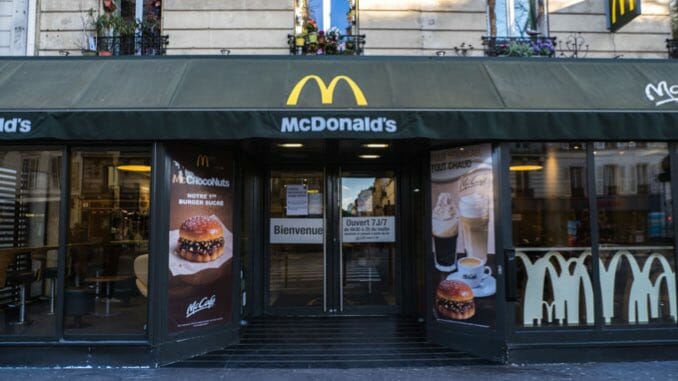Le McDo: Is McDonald’s Truly Better in France?
Photo by Edward Berthelot / Getty
Ze French are infamous for their exacting demands and romantic way of life: they love to sit in cafes burning hours slowly with a long cigarette over a short coffee, they have an unflinching commitment to displays of amour, and they paved the way for haute-cuisine. In short, most French people simply believe that they ‘do’ life better. This claim of superiority even extends to the most iconic symbol of American food: McDonald’s. But is there any truth to the claim that “McDo” (as it is endearingly called by French speakers) is actually better in France than the United States?
There is a certain irony that there is so much bravado amongst the French youth about how their McDonald’s is superior when on one hot summer day in 1999, a sheep farmer named José Bové destroyed an incoming McDonald’s with a bulldozer to no consequence. On the contrary, he became a national hero and political figure against ‘global capitalism’. But two decades later, there are more McDonald’s in France than ever, and just the other day I overheard a 20-year-old girl bragging to her friends about how she spent the weekend: in a luxury hotel, lounging at the spa pool in a bathrobe, slippers, and eating her “McDo” with great pride and delight.
I texted a bunch of my French friends for their take on McDo, and the general response rang into a similar chorus: It’s really bad in the U.S. It has a specific taste that sometimes you just crave. The products here are just… better.
Setting aside my pride of usually making a point to not eat American fast-food in France, I figured there was only one way to find out: to go to the ‘best’ McDonald’s in Paris, and do a taste-test myself. I located a McDo near Bastille—where the French once stormed during the revolution—and the first thing I noticed was that the signature red backdrop of the Golden Arches logo was replaced by a dark green. This branding change was a result of pressure from European organizations to be more environmentally friendly: used cooking oil was turned into biodiesel fuel, more eco-friendly refrigeration, and organic milk and sustainably grown coffee were added to the menus. Inside, the McDonald’s felt more or less the same.
-

-

-

-

-

-

-

-

-

-

-

-

-

-

-

-

-

-

-

-

-

-

-

-

-

-

-

-

-

-

-

-

-

-

-

-

-

-

-

-








































